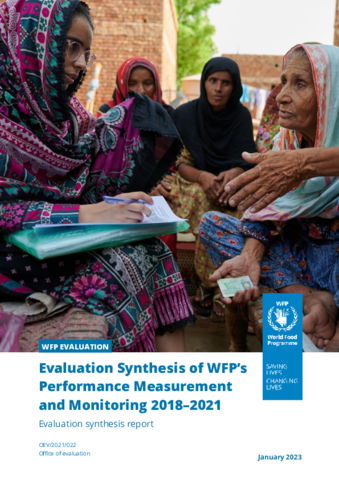
It asked seven synthesis questions to examine the extent to which WFP’s Normative Framework for Monitoring allowed for effective measurement at country level and enabled corporate performance reporting. The synthesis also examined the extent to which WFP’s monitoring systems generated credible information, and for which purposes, and whether and how cross-cutting priorities were reflected in monitoring practices.
The synthesis aims to contribute to WFP’s global and regional evidence base and support corporate decision-making in the short and medium term in the area of performance measurement and monitoring.
Overall, the synthesis finds that the WFP’s Normative Framework for Monitoring continues to provide the necessary structure to support effective performance management and monitoring but does not encourage WFP to capture the breadth of its achievements or track them over time. While evaluations raised concerns around WFP’s ability to track progress over time due to changes to the Normative Framework, these changes appear unavoidable in the short term while WFP moves towards establishing a better-fitting monitoring framework for the longer term.
The synthesis also notes that while the outcomes of the Corporate Monitoring Strategy remain relevant, there are opportunities for improvement around resourcing the monitoring function and making greater use of monitoring data for learning and programme adaptation beyond the more accountability-oriented use for reporting purposes.
The synthesis findings identify clear opportunities to improve the use of data for learning and adjustments. Representing relatively new types of monitoring efforts for WFP during the period of the evaluations, CCS and resilience emerged as specific new areas in need of additional development to better capture and monitor WFP’s efforts and achievements.
The evaluations reviewed also provided strong evidence of the desire and need at both the country and corporate levels to expand and enhance qualitative data collection, analysis and reporting – especially for cross-cutting issues – to support learning and adaptation, pointing out that a focus on predominant quantitative measure and beneficiaries counting will continue to result in “hitting the target” but “missing the point”.
Finally, the synthesis acknowledges that WFP is constantly working to improve its performance management and monitoring systems, and that steps have been taken and efforts are underway to address many of the weaknesses identified in the evaluations reviewed.
